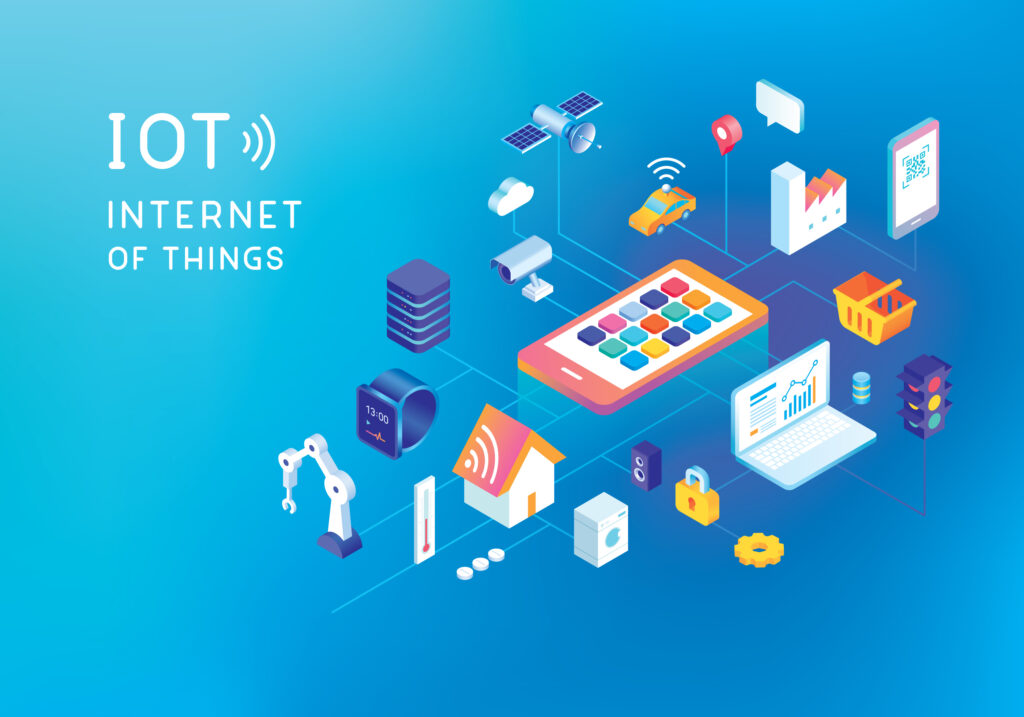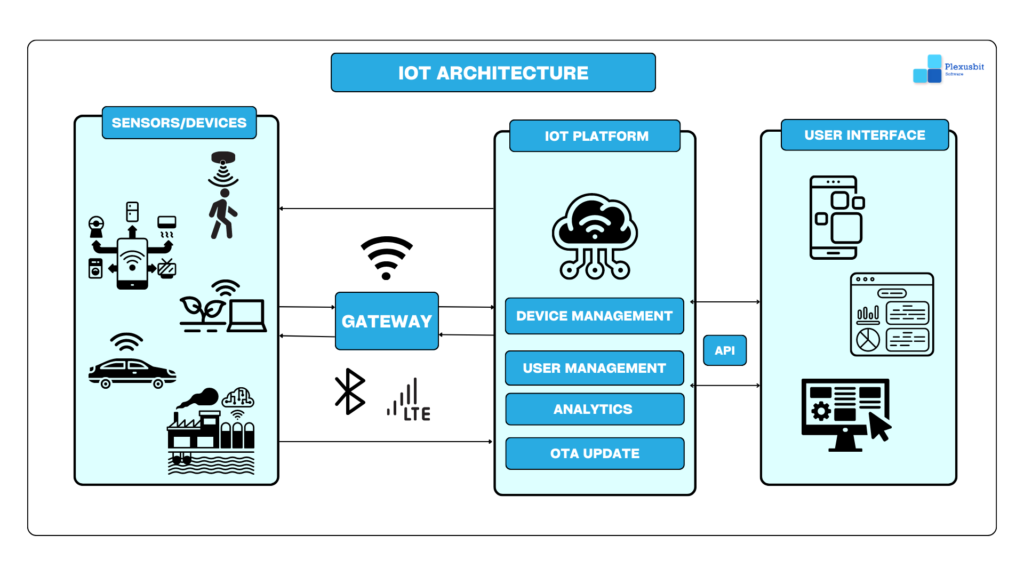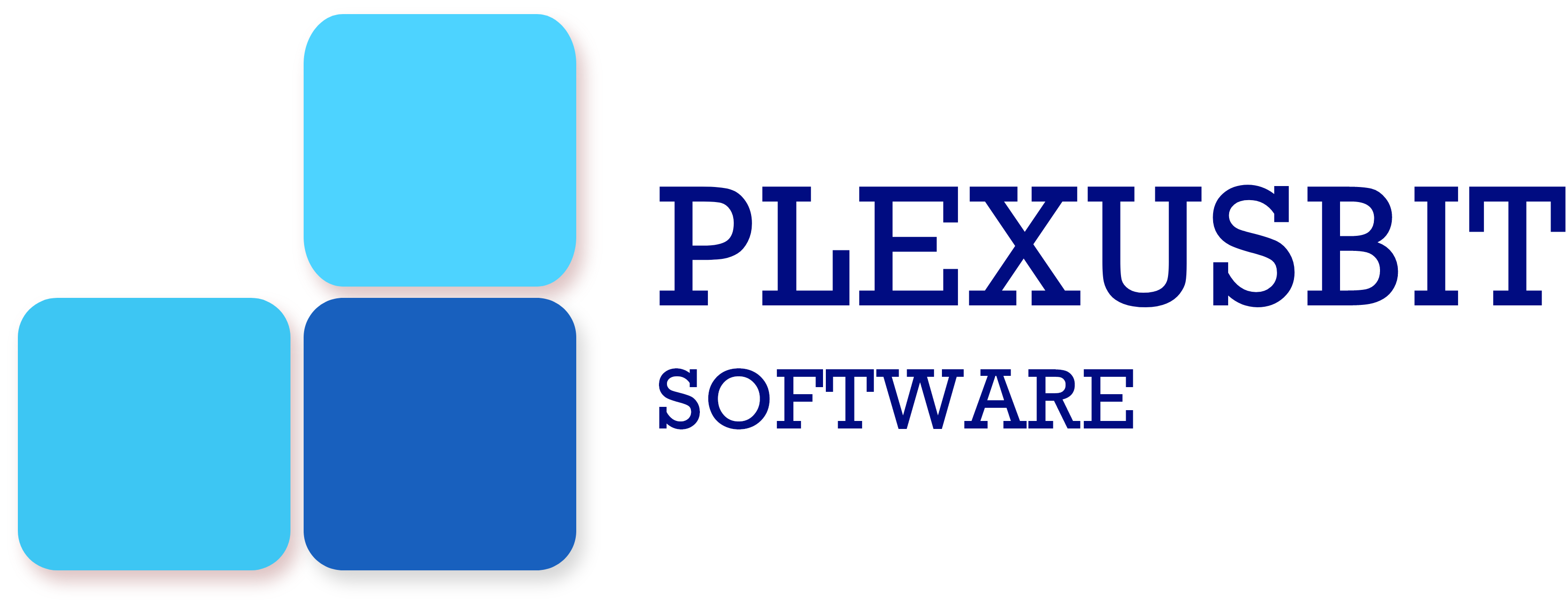
Imagine this — your alarm goes off and as you are waking up, the coffee machine starts to brew the coffee just the way you like it. As you look into mirror, it displays your health insights and weather forecast. You head to the office, and your car has already figured out the fastest route, it also tells you your daily agenda. The access control gives you seamless entry in the office. At lunch, the vending machine offers you healthy options considering your dietary preferences.
As you enter house after the day’s over, the ambiance is created with suitable lighting and temperature. In the evening, the entertainment system offers you personalized recommendations of shows and movies based on your choice. At the same time, smart appliances like washing machine and dishwashers do the chores for you!
Got you daydreaming there, didn’t I?
This interconnectedness and automation of everyday objects are made possible through IoT architecture. It’s a technological marvel that brings together devices, networks, and software systems to create a seamlessly integrated ecosystem. It serves as the foundation for building scalable, secure, and efficient IoT solutions.
IoT architecture encompasses various components, each playing a crucial role in the overall system. These components include –
✔ devices and sensors for data collection
✔ connectivity protocols for seamless communication
✔ IoT gateways for data processing at the edge,
✔ cloud infrastructure for data storage and analytics
✔ user interfaces for interaction with the system
A robust IoT architecture is essential for smooth functioning and addressing the security.

Sensors and devices
Sensors serve as the backbone of data collection in IoT. They are specialized devices designed to detect and measure specific physical properties or events. Sensors can be categorized into various types, including temperature sensors, pressure sensors, light sensors, and motion sensors.
Devices in IoT systems are responsible for collecting data from the environment. These devices can range from simple sensors to complex smart devices equipped with advanced functionalities. They enable the capture of real-time information such as temperature, humidity, motion, and location, among others. By seamlessly integrating with the IoT infrastructure, devices facilitate continuous data collection and enable businesses and organizations to make data-driven decisions.
Connectivity Protocols
Connectivity protocols play a pivotal role in enabling devices to connect, interact, and share data. A wide range of connectivity protocols is available, offering diverse features and functionalities to support various IoT applications. These protocols define the rules and standards for data exchange. They ensure compatibility and interoperability across heterogeneous IoT devices.
Connectivity protocols include popular options such as Wi-Fi, Bluetooth, Zigbee, Z-Wave, Cellular (3G, 4G, 5G), Ethernet, LoRaWAN, and Sigfox. These protocols cater to different requirements, offering varying ranges, data transfer rates, power consumption levels, and network coverage options.
- Wi-Fi provides high-speed wireless connectivity for devices within a local area network, making it suitable for applications with ample power and internet availability.
- Bluetooth offers short-range communication between devices, ideal for connecting peripherals or creating personal area networks.
- Zigbee and Z-Wave are low-power, low-data-rate protocols commonly used in smart home automation applications, communicating over WiFi
- Cellular connectivity, including 3G, 4G, and 5G, provides wide-area coverage and high data transfer rates, suitable for IoT applications that require mobility and internet access outside local networks.
- Narrowband IoT (NB-IoT) is a cellular standard optimized for low-power, wide-area IoT applications. NB-IoT provides extended coverage, deep penetration, and enhanced power efficiency, making it ideal for applications such as smart cities, agriculture, and asset tracking.
- Ethernet is a reliable wired connectivity option used in industrial IoT deployments, offering high data rates and stability. LoRaWAN and Sigfox are long-range, low-power protocols designed for IoT applications requiring wide-area coverage and battery-efficient operation.
IoT gateway
IoT gateways are intermediaries between IoT devices and the cloud, bridging the gap between local networks and the internet. They perform functions like enabling connectivity, data aggregation, and protocol translation within IoT architectures.
- Connectivity and Protocol Translation: IoT gateways enable different devices with diverse connectivity protocols to communicate with each other and the cloud. They act as a centralized hub, converting data formats and protocols, ensuring interoperability across heterogeneous devices.
- Data Aggregation and Processing: Collect data from multiple devices within their local network, aggregating and filtering it before transmitting it to the cloud or other systems. They help reduce network congestion by processing data locally and forwarding only relevant information, optimizing bandwidth usage and improving overall system efficiency.
- Edge Computing: IoT gateways support edge computing capabilities, allowing data processing and analysis to occur closer to the source. This reduces latency and enables real-time decision-making. Mainly used industrial automation, smart grids, and autonomous vehicles.
- Security and Privacy: They also act as the first line of defense in IoT architectures, implementing security measures to protect devices, data, and communications. They can enforce access control policies, perform encryption/decryption, and detect and mitigate security threats.
Cloud infrastructure
Cloud infrastructure plays a pivotal role in supporting the scalability, storage, processing, and analysis of vast amounts of data generated by IoT devices. It offers several key functionalities that contribute to the success of IoT implementations
- Scalability and Elasticity: Cloud infrastructure provides the capability for organizations to easily scale their resources up or down based on demand. That way organizations can meet changing needs and handle fluctuations in data volume and user traffic effectively
- Data Storage and Processing: Cloud platforms offer secure store and management of large volumes of data. They provide data processing services like real-time analytics, machine learning, and artificial intelligence. This helps organizations to derive valuable insights and make data-driven decisions.
- Device Management and Provisioning: This also provides device management capabilities facilitating monitor, update, and configure IoT devices remotely.
- Integration and Interoperability: Cloud platforms enable seamless integration with various systems, applications, and data sources, allowing organizations to consolidate and analyze data from multiple IoT deployments. They provide APIs and data exchange mechanisms, ensuring interoperability across diverse IoT devices and platforms.
User interface
The user interface acts as a bridge between humans and the IoT ecosystem, facilitating effortless interaction and control. A well-designed and intuitive interface allows users to navigate through various IoT applications, visualize data, and perform actions with ease. It employs data visualization techniques to present complex information as graphs, charts, and dashboards. Through a user-friendly interface, individuals can remotely manage and configure IoT devices, set preferences, and define automation rules. This allows for increased convenience, energy efficiency, and customization. For instance, users can adjust the temperature in their homes, schedule tasks, and receive alerts or notifications through the interface, enhancing their comfort and productivity.
In conclusion, the architecture of the Internet of Things (IoT) encompasses several key components that work together to create a connected and intelligent ecosystem. These components work together to create a powerful and intelligent IoT ecosystem that revolutionizes industries and enhances everyday life. However, ensuring the security and privacy of IoT systems is paramount. Robust security measures, such as authentication, encryption, access controls, and regular updates, must be implemented at each layer of the architecture to protect against potential threats and vulnerabilities.
As IoT continues to advance and evolve, its architecture will continue to adapt to emerging technologies and industry requirements. The integration of artificial intelligence, machine learning, and edge computing will further enhance the capabilities and potential of IoT systems. By understanding the role of each component in IoT architecture and prioritizing security, organizations can harness the full potential of IoT, drive innovation, and create a connected world that enhances efficiency, productivity, and quality of life.
